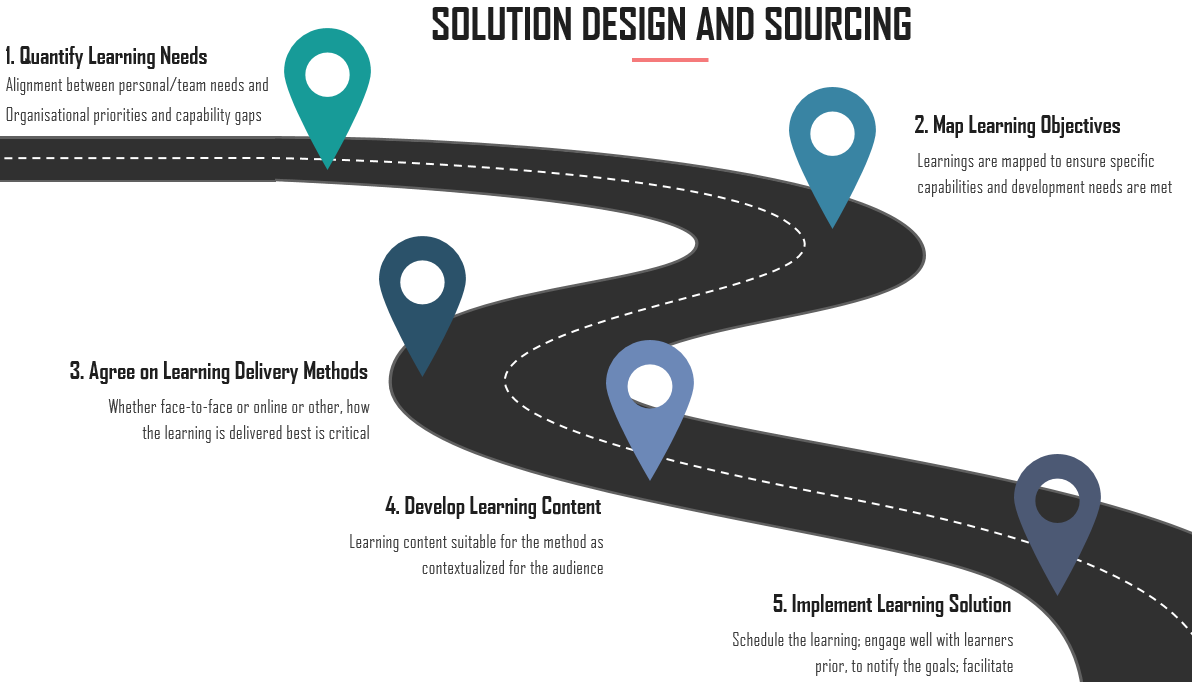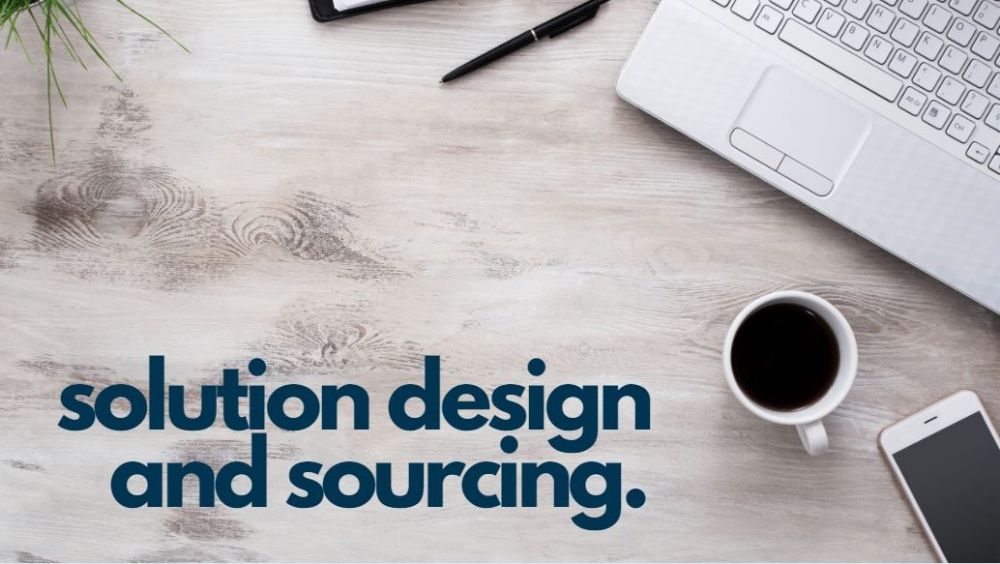For you personally or for your team, you have an ideal, or a challenge to arise to…..but where do I start? How do I know what solution to design or where to source the solution? Again, your strategic Learning Partner is ready to support you. Here is a roadmap of getting from where you are to where you want to be.

1. Quantify the Learning Needs
Individual and leaders are faced with so much choice for learning. The risk is not that the learning will not happen, the risk is the learning chosen will not be the most relevant and helpful learning. Being strategic is key. You will assess the alignment with TSA mission, vision and strategy. You must assess the capability gaps. You would do well to have a perspective from your team as well as an understanding of previous learning and the success or lack of previous training and cause.
2. Map Learning Objectives
We have discovered the learning needs – now to place them in an order which makes sense, to ensure specific capabilities and development needs are in developmental order. Do not try to teach people to run when they are yet to learn how to crawl!
3. Learning Delivery Methods
We have adapted very quickly to learning online, whether live or recorded or through LEARN (TSA online learning platform). However, different methods suit different groups as well as different content. Getting this ‘right’ and agreed upon can make a difference to the learning experience and therefore, how well the content will be embedded. Remember, only 10-15% of content learned in a course will be recalled after a period. The other 75-80% comes from the learner teaching others and the usage of the course content.
4. Develop Learning Content
Given the delivery method, the content can then be developed or refined. The content must be contextualized for the learning group. A ‘one size fits all’ with some content can lead to suboptimal results. In addition, how learning is developed online must differ from face to face training for the benefit of the learner. Once developed and prior to implementation, the key stakeholder/s must endorse the content. Why? Because the responsibility of embedding the learning may well rest with the leader of the team with or without the support of your Learn and Development team.
5. Implement Learning Solution
Implementation includes inviting the participants to learn prior to the formal learning space. Aspects which can change outcomes is the learner being as close to voluntary participation as possible. If they’re not voluntary, how can I communicate in such a way that tells the learner that it is for them and will improve their personal satisfaction? How can I explain that though it may be compulsory, or even punitive, that they are invited to participate? The invitation, true welcoming, to learn is critical. What can the learner expect from you? Expect from the learning? Expect the learning to fulfil what in their role?
Then who is facilitating? If the facilitator is external, what do they need to know to ensure success for the stakeholder/s? Implementing learning includes follow up and who is responsible for what. This might be debatable but I include it here because we can follow all steps and not have a follow-up plan and the outcome may not be reached or reached with less impact.
They are the essential steps.
In addition, the key stakeholder has to be the owner of the responsibility for the overall outcome. If someone aside from the key stakeholder cares more for the outcome, there not only will be an imbalance but poor results can be the expected outcome. This is about the growth of individuals and teams which leads to better organisational outcomes. It takes time and deliberate action.
The Salvation Army Learning and Development Team will support you in your learning endeavour from strategy to delivery.
